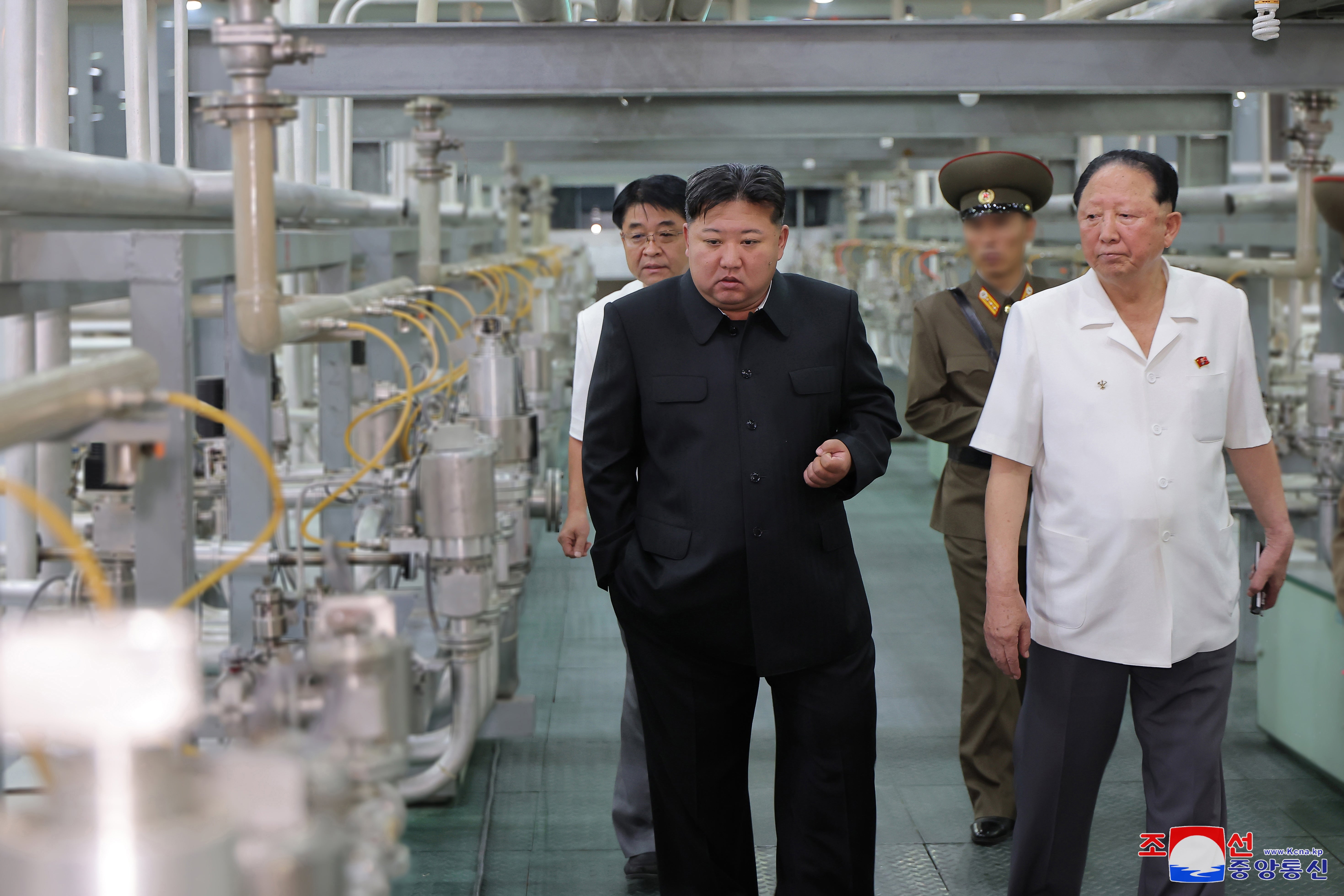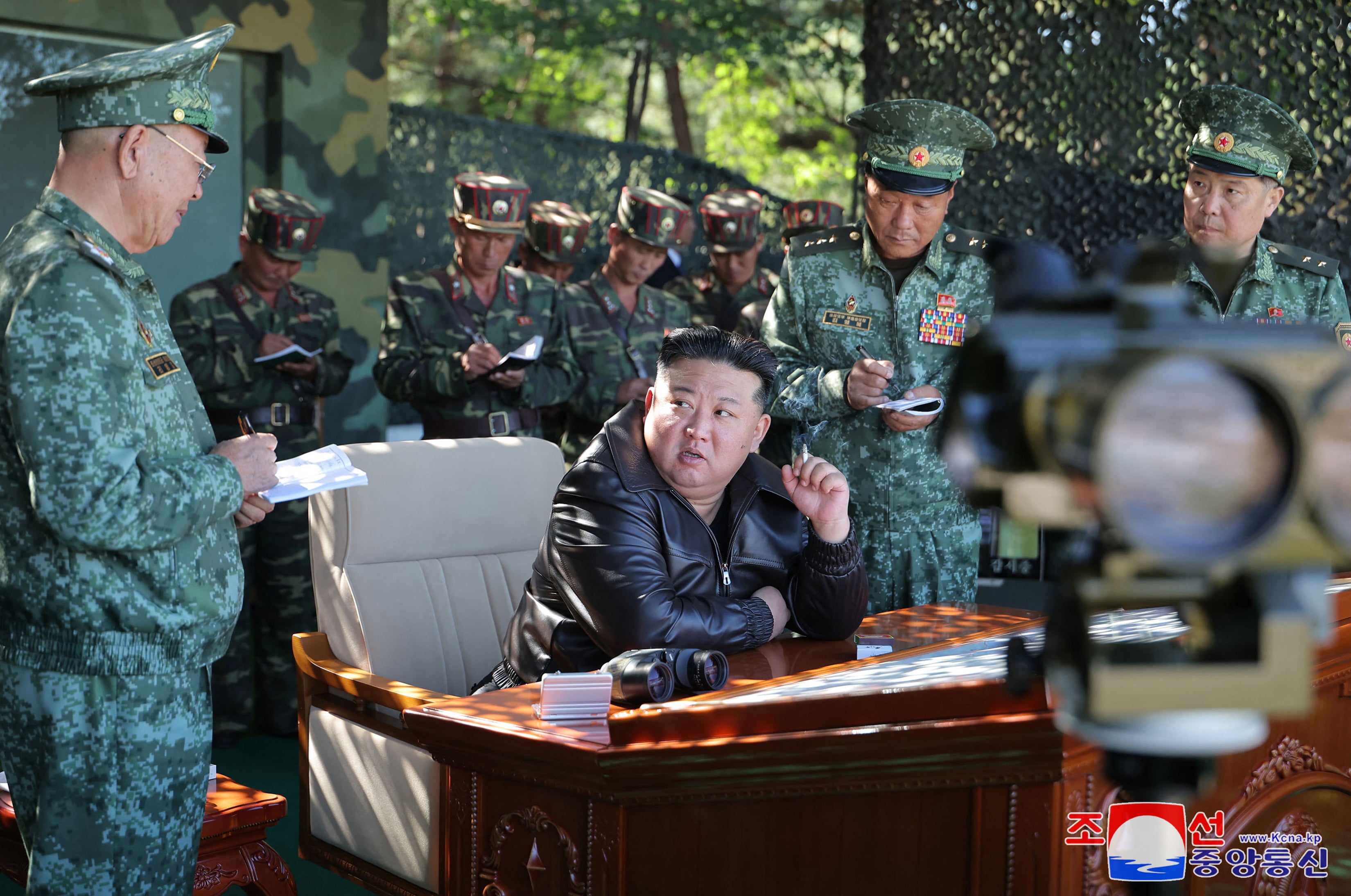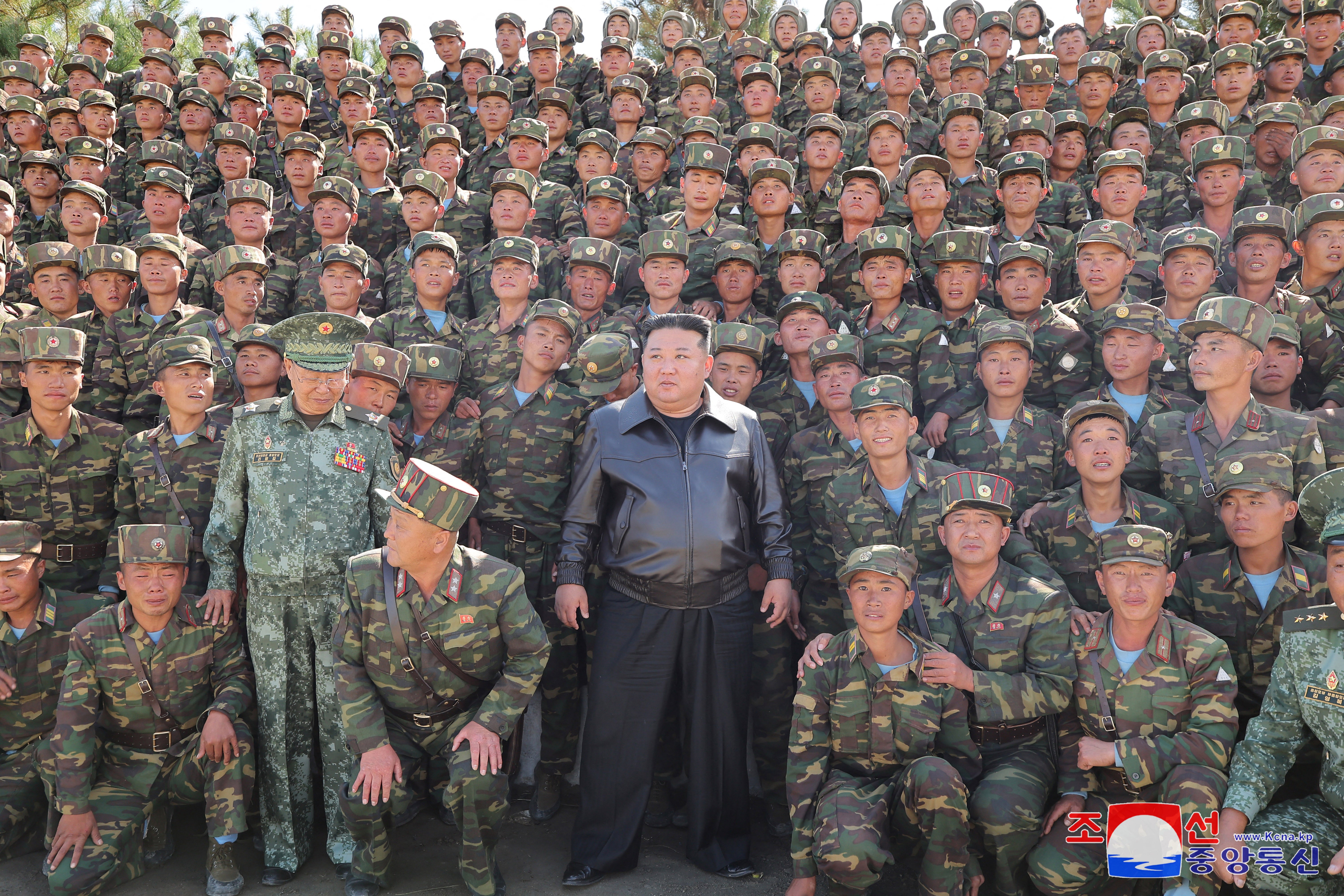Your support helps us to tell the story
This election is still a dead heat, according to most polls. In a fight with such wafer-thin margins, we need reporters on the ground talking to the people Trump and Harris are courting. Your support allows us to keep sending journalists to the story.
The Independent is trusted by 27 million Americans from across the entire political spectrum every month. Unlike many other quality news outlets, we choose not to lock you out of our reporting and analysis with paywalls. But quality journalism must still be paid for.
Help us keep bring these critical stories to light. Your support makes all the difference.
North Korea has amassed enough weapons-grade nuclear material to more than double its existing stockpile of atomic weapons, a new analysis by a UK-based think tank has found.
Kim Jong-un is already believed to have between 80 and 90 nuclear warheads at his disposal, and likely has enough enriched plutonium and uranium – known as fissile material – to build in this tally significantly, according to a new report by the Royal United Services Institute (Rusi).
Fissile material is an essential ingredient of nuclear weapons, which typically require at least a few kilograms to kickstart a devastating chain-reaction. In 1945, Hiroshima was destroyed by the fission of about one kilogram of uranium 234, while Nagasaki was destroyed by the fission of one kilogram of plutonium 239.
Analysts assessed information from Kim’s own public appearances at nuclear enrichment facilities, as well as other state media reports and satellite images, to conclude that Pyongyang has enough fissile material to produce between 80 and 200 more short and medium-range single stage warheads. Nicknamed “disco balls” by researchers, single stage warheads have a yield equivalent to around 10 kilotons of TNT.
Kim also has enough material to develop between 25 and 35 strategic thermonuclear warheads, they said. This second generation of weapons can be used to strike large cities and industrial centres via intercontinental or submarine-launched ballistic missiles.
In combination, and in such volumes, these weapons would be enough to achieve the two core goals of North Korea’s nuclear programme – offering a deterrent against the use of conventional weapons by its near neighbours South Korea and Japan, and a credible threat against the US mainland, Rusi said.
North Korea is also unlikely to stop there, the think tank said. As it moves from an early-stage programme to a more established one, like other nuclear states it will likely continue to make more weapons-grade nuclear material than required for its immediate defence needs.

North Korea, increasingly touting its nuclear weapons as a matter of national prestige and proof of its power, says its arsenal of nuclear weapons and the ballistic missiles to carry them are necessary to counter threats from the US and its allies. Other world powers have accused Pyongyang of nuclear sabre-rattling.
“Given its fissile-material inventory at the end of 2023, North Korea might have already developed approximately 21–23 composite (plutonium and Highly Enriched Uranium) thermonuclear warheads,” Rusi said in its new report.
The hermit kingdom has likely met its nuclear material production goals or is close to reaching this point, the think tank said, noting that the North is still likely constrained by limitations on its plutonium supply.
North Korea is prohibited by UN Security Council resolutions from carrying out any activity using ballistic missile technology, and this includes attempts to send a satellite with a rocket into space.
Sarah Laderman, a senior analyst for the Open Nuclear Network, part of the non-profit organisation PAX sapiens which was contracted by Rusi to carry out the research, said North Korea is looking for both smaller, closer-range weapons and larger, longer-range options, and the think tank’s analysis looked at the trade-offs between prioritising either of the two.
“We [can] assume, as we’ve been seeing in state media and just by their actions and what pictures they choose to release, they’re really focusing on a dual capable arsenal. They’re really looking to deter the US, which is further away, so they need a more strategic arsenal, and then obviously [they have] regional adversaries like South Korea and Japan as well,” Ms Laderman told The Independent.

To achieve that objective, the assessment shows Pyongyang is likely aiming to structure its arsenal much like other existing nuclear-armed states have done, the senior analyst said.
“If they are looking specifically to defeat or get through the US missile defences for their strategic arsenal – they could be looking to develop somewhere between 25 and 35 strategic weapons. Then, their short and medium range is quite interesting because there’s so many ways they could structure that,” she said.
“Should deterrence fail, North Korea aims to contain and win any conflict on the Korean Peninsula, ensuring the regime’s survival,” it said.
“To meet these objectives, North Korea appears to be developing both a strategic and more versatile arsenal – featuring smaller-yield weapons and varied delivery platforms – for regional and battlefield use,” Rusi has assessed.
Experts monitoring North Korea have suggested Mr Kim could carry out a nuclear weapons test ahead of the US presidential election in an attempt to dial up pressure on Washington. However, South Korea’s spy agency says North could also wait for a nuclear test until after the election as it may want to complete a series of tests involving its long range ballistic missile programme first.

North Korea has never publicly disclosed the extent of its nuclear arsenal, leaving analysts and foreign intelligence agencies to make rough estimates based on state media photos of various types of warheads.
The country is likely in possession of 80 to 90 nuclear warheads of uranium and plutonium, and this number is likely to rise to 166 by 2030, Lee Sang-kyu, a nuclear engineering expert at Korea Institute for Defence Analysis in Seoul said last month, after Pyongyang disclosed the first photos of a uranium enrichment site.
He assessed that North Korea likely has about 70kg of plutonium and an unspecified but considerable amount of weapons-grade uranium that would be enough to build “at least a double-digit number” of weapons.
Uranium, used as fuel for nuclear power plants and nuclear reactors, was shown by North Korea at the site designed to produce weapons-grade fuel for its nuclear bombs.
Rusi noted a significant shift in North Korea’s position from last year when Mr Kim declared there will be no more denuclearisation talks, announcing the country’s status as a nuclear weapons state as “irreversible”.

North Korea is now the only nuclear-armed state to have any reference to the weapons in its constitution, according to the report.
The North’s nuclear-armed status was seen as negotiable by Washington, which has imposed numerous sanctions on North Korea for developing nuclear weapons and related activities.
Years of US-led international sanctions have failed to halt North Korea’s nuclear weapons and missile programmes.
“I do not think that they are going to denuclearise anytime soon. I don’t think they’re open to that idea. They have enshrined this in their constitution as their constitutional right, stating that this is their right as a state to defend themselves via nuclear weapons,” Ms Laderman said.
For the West to have any dialogue, which the North has successfully avoided and developed its fissile-material inventory along with testing several nuclear weapons, it will have to remove the precondition on North’s denuclearisation, she added.
Last month, North Korea tested new tactical ballistic missiles using super-large warheads and modified cruise missiles in a launch led by Mr Kim. He claimed that the tests to improve weapons capabilities are required because of the grave threat posed by outside forces to the security of the country.
“So as long as countries insist on only talking about denuclearisation, we don’t see North Korea coming to the table. They want the West to have an open mind and not focus on denuclearisation,” Ms Laderman said.

